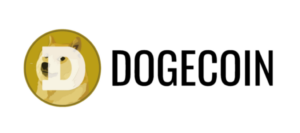Ethereum Analysis: VanEck Provides Insights on $ETH’s Underperformance in 2024

Global asset manager VanEck recently released its “Crypto Monthly Recap for August 2024,” shedding light on the challenging month the crypto market faced. According to VanEck, major cryptocurrencies experienced significant drops, with Bitcoin falling by 11%, Ethereum by 24%, and Solana by 21%. In contrast, traditional markets like the S&P 500 and Nasdaq saw gains of 2% and 1%, respectively. VanEck also noted a 12% decrease in the market capitalization of Smart Contract Platforms (SCPs), indicating a notable decline in investor sentiment.
VanEck attributed a flash crash in the crypto market on August 5 to a macroeconomic event triggered by the yen carry trade, causing Bitcoin to briefly dip to $49k and Ethereum to $2.1k. By the end of the month, Bitcoin had rebounded to $58k, while Ethereum remained stagnant around $2.5k. VanEck highlighted a 48% surge in Bitcoin’s volatility and a 52% increase in Ethereum’s, signaling heightened market uncertainty.
The report also outlined a decline in blockchain activity, with a 10% reduction in daily active users, a 12% drop in fees generated, and a 4% fall in decentralized exchange (DEX) volumes. VanEck pointed out the movement of 186,000 BTC to exchanges, likely for sale due to bankruptcy-related distributions and government actions in the U.S. and Germany, adding to the selling pressure.
Regulatory pressure in the U.S. was another factor impacting the market, with a Wells Notice issued by the SEC to OpenSea, a prominent NFT platform, raising concerns about continued regulatory crackdowns, especially if political changes do not occur. VanEck also highlighted controversy surrounding Wrapped Bitcoin (WBTC) due to a partnership between Bitgo and Justin Sun, leading MakerDAO to propose banning WBTC as collateral for its DAI stablecoin. In response, Coinbase introduced its version of Wrapped Bitcoin (wbBTC).
Regarding Solana, VanEck noted a 21% price drop driven by fraudulent activity linked to memecoins. Despite this, Solana saw positive developments, such as the launch of two ETFs in Brazil and the increasing use of PayPal’s PYUSD stablecoin on its network. However, the challenge of Solana’s large blockchain size of 150 terabytes remains, making storing and querying historical data costly.
VanEck also discussed Polymarket, a decentralized prediction market that gained traction in August, particularly in political prediction markets, though concerns about potential market manipulation persist.
VanEck’s detailed analysis delved into Ethereum’s struggles compared to other Layer 1 blockchains. Ethereum’s 62% annual return since the start of the 2023 bull market significantly lags behind Bitcoin’s 138% and Solana’s impressive 624%. VanEck attributed this underperformance to Ethereum’s scalability issues and the emergence of faster, more efficient competitors.
Ethereum’s transaction throughput, around 15 transactions per second (TPS), falls short compared to newer blockchains like Solana and Aptos, which handle thousands of TPS. The report highlighted Ethereum’s dwindling share of blockchain fees and decentralized exchange volumes, indicating a shift away from Ethereum for speculative trading. Despite efforts to address scalability through Layer 2 solutions, VanEck pointed out that these solutions have introduced new challenges, impacting Ethereum’s revenue and economic activity.
In conclusion, VanEck’s analysis paints a comprehensive picture of Ethereum’s struggles, emphasizing scalability limitations, competition from faster blockchains, and the unintended consequences of relying on Layer 2 solutions.




